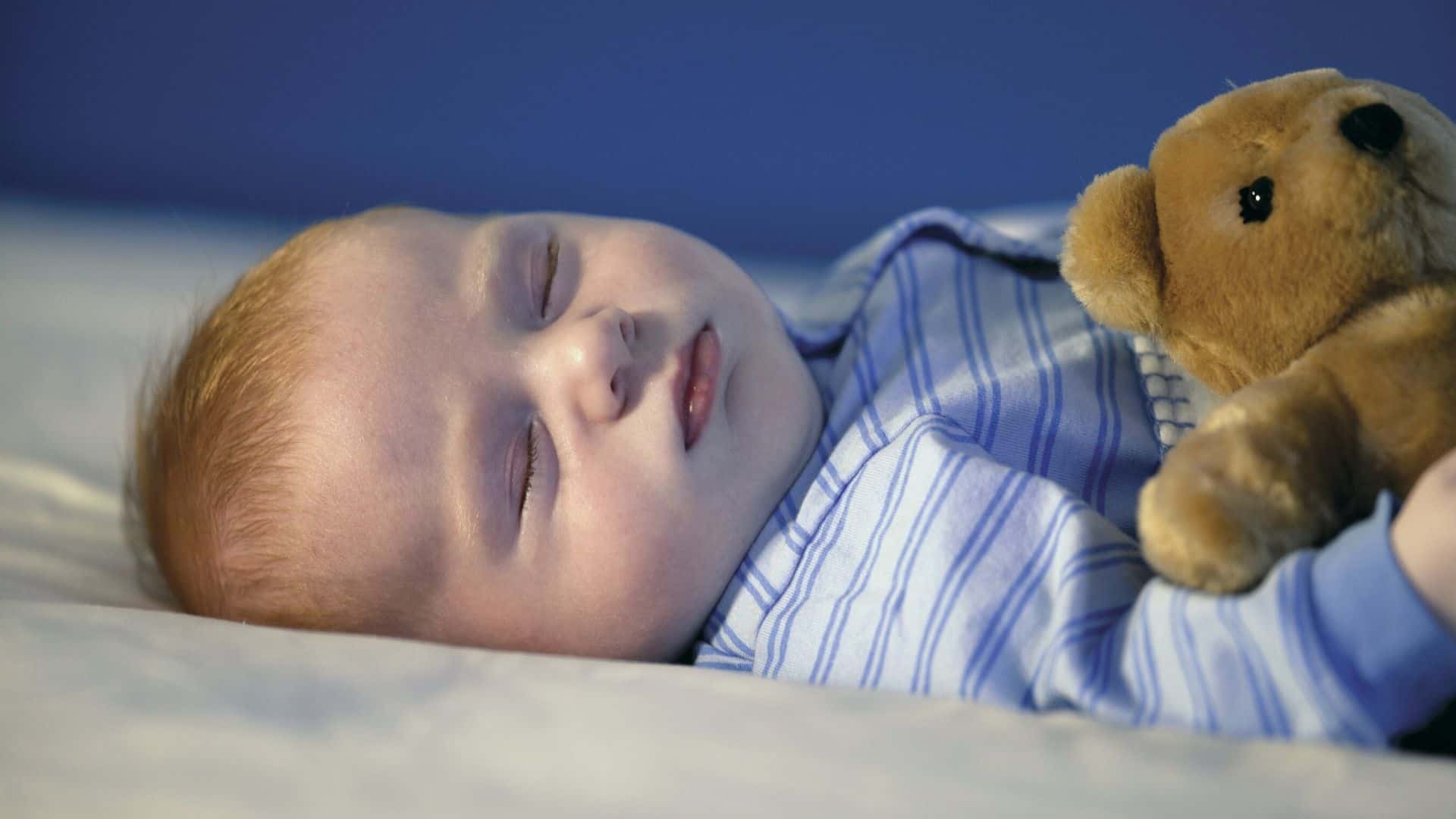Sleep training for baby & toddler | This way you will find what suits you

Always something to do for the holidays or rainy day?
Play Choice now has the ultimate activity book collection, with over 60 pages of fun coloring pages and educational puzzles.
Sleep training for your kids: why and how it works
For thousands of years mothers sang lullabies for their babies and help children fall asleep.
Today, all kinds of gadgets and devices have been invented and marketed to help the tired child, and the tired parent.
The popularity of such a device shows the desire and the common problems babies and getting children to sleep.
In this article I will look at tips for you baby en toddler to get to sleep.

Think that nearly 30% of young children have sleeping problems requiring clinical attention.
As specialists in behavioral sleep medicine, we have completed postgraduate training in the assessment and treatment of behavioral sleep problems in children and teenagers.
As a quick summary that you can implement immediately, there are four main methods to start sleep training with baby/ toddler:
- with a baby or toddler who only wants to fall asleep in the room with you, you can use the walking chair technique where you move your chair further and further away from the bed and reduce it until you are outside the room and in your own bed
- with a child who wakes up crying at night, you can always go back to comfort, but the speed with which you go to your child always leaves something so that they have more and more the opportunity to fall asleep themselves
- timed check-ups instead of coming on command so that you can reward your child for lying quietly at that moment instead of rewarding them for unwanted crying behavior
- postpone going to bed slightly so that your child is a lot more tired and the chance of sleeping through the night is much greater. This can be especially successful if your child often takes a very long nap or maybe two more during the day
Knowledge of pediatric sleep research suggests that children will not outgrow sleep problems on their own, and sleep problems can actually worsen over time.
Still, children with sleep problems are not destined to be sleep deprived forever.
There are sleep training methods for this babies and young children who can work.
Sleep doctors have seen that sleep problems are associated with a wide variety of daytime problems, such as overactivity and attention problems, poor school performance, and excessive moodiness and irritability.
As many as 20% of adults experience persistent insomnia and many can trace their sleep problems back to childhood.
The most common sleeping problems in young children are:
- trouble falling asleep at bedtime
- rough night awakening
- or need special circumstances to fall asleep, such as the presence of a parent.
These problems, in turn, are likely to cause parental stress and problems for the whole family the next day.
People often equate lack of sleep with 'fatigue'. However, sleep is its own process.
It is an interaction of sleep-promoting brain chemicals at night and consistent daily rhythms of waking up from exposure to bright light in the morning.
The bright light signals suppression of the sleep-promoting hormone melatonin.
Darkness, on the other hand, signals the brain via direct connection of receptors in the eye: “Produce melatonin; Go to sleep."
When it comes down to it, as a parent there is actually nothing safe to do about means to help your child sleep.
But there are many things parents can do to teach their children the skills needed for a good night's sleep.
Sleep coach Susanne Willekes has 5 for this babies:
Her book Sleep! can you here at bol.com.
Insomnia responds well to a number of behavioral treatments that you can challenge it with.
First of all, I will discuss your sleeping habits baby or your toddler and then I will discuss a number of examinations and sleep training that you can do to learn to sleep independently.

From toddler to toddler activity book collection
Educational games and coloring pages for 3 to 6 years
Your toddler and preschooler will love this e-book, along with the accompanying printables. He or she can play with it at every stage of development, together with mom and dad.
Buy at Bol.comWhat we discuss in this comprehensive post:
Sleeping habits of baby and toddler
Sleeping patterns are often learned as children. When these patterns are repeated, they become habits.
Helping your child learn good bedtime habits can make bedtime a pleasant routine for you and your child.
Your new baby (under 2 months) and sleeping
In the beginning you have new baby a 24-hour feeding and sleep-wake cycle.
Newborns can sleep between 10 and 18 hours a day. They only stay awake for 1 to 3 hours at a time. Signs that you baby becomes drowsy, include:
- To cry
- Rubbing the eyes
- Short fuse
You try baby sleepy to put them to bed, but make sure they are not asleep yet.

For your newborn baby Encourage more sleep at night than during the day: Expose your newborn to light and sound during the day.
As evening or bedtime approaches, dim the lights, keep quiet, and reduce the amount of activity around you baby.
When you baby If you wake up at night to eat, keep the room dark and quiet.
Also read: these are the car seats group 1, 2 and 3 that came out best
Your baby (3 to 12 months) and sleeping
At the age of 4 months, your child can sleep for a maximum of 6 to 8 hours at a time.
Most children sleep for 6 to 9 hours between the ages of 10 and 12 months.
It is common during the first year of life babies Take 1 to 4 naps per day, each lasting 30 minutes to 2 hours.
When you are one baby to bed, make sure the bedtime routine is consistent and enjoyable. Give the last night feeding shortly before feeding baby puts to bed.
Spend quiet time with your child by swinging, walking or to cuddle.
Put the child to bed before he is sound asleep. This teaches your child to go to sleep independently.
Je baby may cry when you put him in his bed because he is afraid to be away from you. This is called separation anxiety.
Just go in, speak in a calm voice, and rub the person's back or head baby.
Get the baby DO NOT get out of bed.
Once he has calmed down, leave the room.
Your child will quickly learn that you are just in another room.
If you are using baby If you wake up during the night to feed, DO NOT turn on the lights. Keep the room dark and quiet. Use night lighting if necessary.
Keep the feeding as short and calm as possible. Entertain the baby NOT.
Wanneer de baby has been fed, burped and soothed, you bring your baby back to bed.
Sticking to this routine will affect you baby gets used to it and goes to sleep independently.
By 9 months of age, if not earlier, most can babies at least 8 to 10 hours of sleep without needing a nighttime feeding.
Babies still wake up at night. Over time you learn baby however, to calm herself down and fall asleep.
Your toddler and sleep
A toddler usually sleeps 12 to 14 hours a day. By about 15 months, kids only need one nap a day.
The nap should not be close to bedtime.
Make the bedtime routine enjoyable and predictable. Keep activities like taking a bath, brushing your teeth, reading stories, and so on, in the same order every night.
Choose activities that are soothing, such as taking a bath, reading, or giving a gentle massage.
Keep the routine for a set amount of time every night. Give your child a warning when it is almost time to turn off the lights and go to sleep.
A stuffed animal or special blanket can give the child some security after the lights have gone out.

Before turning off the light, ask if the child needs anything else when they get a little older. Fulfilling a simple request is OK.
Once the door is closed, it is best to ignore further requests.
From crying to learning a (sleeping) skill
Many families have heard of the conventional "cry out" approach.
Do you want a good night's sleep? Let the baby cry, say psychologists.

It will be music to the ears of the spouses who lobby their other halves in vain to “get the baby just make you cry,” but will be a thorn in the side of those who see the method as a cruel 50s custom.
But academics say they have shown that putting one to sleep baby the best way is to ensure a good night's sleep for everyone.
From when does a baby continue sleeping
While most babies If you sleep through the night five or six nights a week from age 6 to 9 months at the latest, a third stay awake much more often until they are toddlers (according to the study by psychologists at the University of Philadelphia).
They looked at sleep patterns in 1200 children from birth to three years of age and found that the 'awakeners' were most often boys.
They also tended to be breastfed more often than bottle-fed.
The research was led by Marsha Weinraub, a professor of psychology at Temple University in Philadelphia.
She concluded that babies had to fall asleep alone, even if it meant crying a little.
This enabled them to learn to `` calm themselves '' and put themselves to sleep, which also gave exhausted parents a break, she argued.
Crying independently and going to sleep
She said, "This data supports those parenting practices that encourage children to go to sleep on their own, without breastfeeding, without being held, and ultimately learn to comfort themselves."
This is really hard for some babies. And it's even harder for parents.
If parents want to teach their children to sleep through the night, they must teach their children to be able to fall back to sleep after waking up.
This can cause parents to not respond when their children wake up and cry or cry, especially after the age of nine or ten months.
If the parent knows the child is safe and just needs help falling asleep, it may be best to let the child learn to fall back to sleep on their own.
She said: “The best advice is to babies putting them to bed at a consistent time each night allows them to fall asleep and resist the urge to respond immediately to waking.
When mothers rely on these nighttime awakenings, or as a baby has a habit of falling asleep while breastfeeding, he or she may not learn how to self-soothe, which is crucial for regular sleep.
Writing in the journal Developmental Psychology, she and colleagues said they also found that mothers of... babies who were persistently awake were more likely to be depressed.
However, she admitted that their research could not separate cause and effect.
Did their maternity techniques lead to poorer sleep and thus maternal depression?
Or did pre-existing depression mean that such mothers could not tolerate their treatment? babies to make you cry?
Professor Weinraub's advice is consistent with that of baby gurus such as Gina Ford, author of the satisfied baby.
Ford advocates a rigid approach to bedtime where the baby needing to be left alone for a while, a technique called 'controlled crying' and a 'no eye contact' rule when comforting at night.
However, Ford has often been attacked as heartless, with critics often pointing out that she is a maternity nurse who has never had a child of her own.
Proponents of 'attachment parenting' see babies Crying to sleep is a form of neglect that can lead to long-term psychological damage.
Penelope later wrote Leach in her book The Essential First Year: “It is potentially harmful to babies to make you cry.”
It generated high levels of the stress hormone cortisol, she said, which neurobiologists say is toxic to the human brain.
In May this investigation of the University of North Texas which stated this, although it was led by a member of the Attachment Parenting International Research Group.
Both sides of the debate, or rather argument, are conducting academic studies as weapons in a fight that is unlikely to end anytime soon.
Lees meer: these ground boxes came out as the best and safest in the test
Australian study
A new study has been published in the journal Pediatrics says it's fine to babies to cry at night.
Researchers from Australia worked with families who said their... babies (age 6-16 months) had a sleeping problem.
They divided the families into three groups:
- They were told to do `` graduated extinction, '' which involves allowing the baby to cry for a minute before going in and interacting with them, then gradually increasing the amount of time they let them cry.
- Another group did something called `` bedtime fading, '' telling the parents to let them go to bed later so the babies were more tired.
- The last group was the “control group” and was educated about babies and sleep, but nothing else.
To reduce the effects on the babies To measure this, the researchers did something interesting: they measured the level of cortisol, a stress hormone, in the saliva of the baby.
They also asked the mothers about their own stress level.
Twelve months later, they looked for emotional or behavioral problems in the babies, and they also did tests to see how attached the babies were to their mothers.
This is what they found.
The babies in the graduated extinction and the delayed sleep group both fell asleep faster and had less stress than the control group.
Not only that, their mothers were less stressed than the control mothers.
Of the three groups babies with extinction less chance of waking up again during the night.
And when it came to emotional or behavioral problems or attachment, all three groups were the same.
This means it's good for you baby to cry a little.
Not only is it good, it can lead to more sleep for everyone. That makes everyone happier.
We can sleep and still have well-adjusted children who love us. How great is that?
To be clear, graduated extinction doesn't mean you have to let your child cry all night long.
It just means that slowly but surely you baby helps him learn to calm down when he wakes up in the night, instead of always relying on you to do it.
Dr. Richard Ferber has a great book called Solve your child's sleep problems that explains all this and is very useful.
Tackle sleep problems together
Tackle it together. When you have a partner, you need to agree on how to manage your child's sleep problems.
You don't want to try to decide what to do in the middle of the night. Once you agree what is best for your child, it will be easier to stick to your plan.
For some couples, such an agreement is likely to be challenging.
The important thing is to be consistent. If your little one wakes up and cries out at night, try to figure out what might be contributing to these episodes.
Sometimes parents unintentionally reinforce waking in the middle of the night by sometimes responding to their child, but other times they don't, like going for their little one after 5:00 a.m. and putting him to bed with you.
Your little one can't know the time, so he might be able to check all night if it's time to get up.
If you don't come for him, he'll go back to sleep until the next time he wakes up and checks back in.
Ways of sleep training
Although research into the effectiveness of this method babies and supports toddlers, experience has shown that few parents find this approach tolerable.
In addition, “make you cry” is not intended for use with older toddlers or preschoolers.
Instead, a method called gradual fading is the main pillar of the current behavioral intervention for bedtime resistance and sleep association problems.
Babies are on average after 6 months ready to start sleep training.
There are several approaches, from infancy to middle childhood, consisting of techniques such as the aforementioned graduated extinction, timed checks, making a little more tired and putting to bed later, or the 'walking chair'.
In timed check-ups, parents enter and exit the bedroom on a strictly timed schedule.
This breaks the link between problem behaviors of children, such as crying and shouting, and response from parents.
The walking chair method involves the parent moving further and further away from the child's bed outside the bedroom door and eventually back to her own bed.
A combination of these methods is often necessary for persistent sleep problems.
Both methods emphasize the importance of limiting attention to the problem behavior, starting to cry, to shifting to paying attention to positive sleeping behavior, such as lying quietly in bed.
Consider a child with a long history of needing parental presence to fall asleep.
The child can be said to be deficient in skills due to the inability to fall asleep on its own.
Learning to fall asleep can be compared to learning to ride a bicycle, first with training wheels, then without, and then without the parent holding the handlebars.
Little by little, the parent takes her hand away and the child learns the balance and eventually kicks it away on its own.
With sleep training, the parent teaches the child to practice behaviors compatible with sleep, such as lying still and quietly in bed with their head on the pillow.
When the parent enters the room every five minutes to say, "Well done, stay in bed and lie still like this," and give a quick kiss and pat on the back, the child knows exactly what the parent thinks is good behavior.
As soon as the child learns to lie still and quietly in bed, sleep physiology takes over.
Healthy sleep now, healthy sleep in adulthood
Many parents may mistakenly believe that sleep training is detrimental to the parent-child relationship or attachment bond.
In fact, I argue that healthy attachment bonds are formed by a high degree of reinforcement of parent-child interaction with such sleep training.
Sleep training at a younger age can protect against more serious sleep problems later in life.
For example, at the beginning of puberty, most teens experience a natural biological shift that makes them prefer to go to bed later and get up later.
For most, this preference does not diminish until young adulthood.
If this natural shift in bedtime and wake time is accompanied by already problematic sleep habits learned in childhood, the results can be severe.
Children can stay behind at school because they fall asleep in class or they can skip school.
Additionally, when teens try to correct the sleep problems themselves, they often find that they are unable to fall asleep easily at the right time for bed.
Many end up spending a lot of time awake in bed, putting them at risk for chronic insomnia that could persist into middle age.
Conclusion
It's a natural instinct for you baby to stop crying.
But sometimes have milestones crying in life – whether it's getting back to sleep, learning to walk (there's always a stumble here and there), starting childcare or school (leaving parents is hard).
Never letting our children cry doesn't help them, it can actually harm them. And let's face it, sleeping also helps us become better parents.
If your child isn't sleeping, don't lose hope.
Change is possible. You have already taught your child a lot and continue to teach your child many important lessons in life, including about sleeping independently.
With persistence, good information and a willingness to try new things, healthy sleeping habits and a good night's sleep are within reach.
And, if you need advice or cannot resolve it on your own, consult your doctor for advice or possible referral to a sleep expert.
Lees meer: the best bath toys
[Wl_faceted_search]

Always something to do for the holidays or rainy day?
Play Choice now has the ultimate activity book collection, with over 60 pages of fun coloring pages and educational puzzles.
Joost Nusselder, the founder of Speelkeuze.nl is a content marketer, father and loves trying out new toys. As a child he came into contact with everything related to games when his mother started the Tinnen Soldaat in Ede. Now he and his team create helpful blog articles to help loyal readers with fun play ideas.